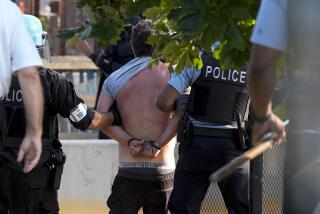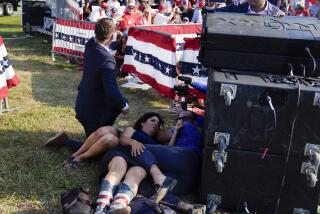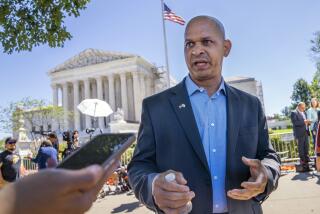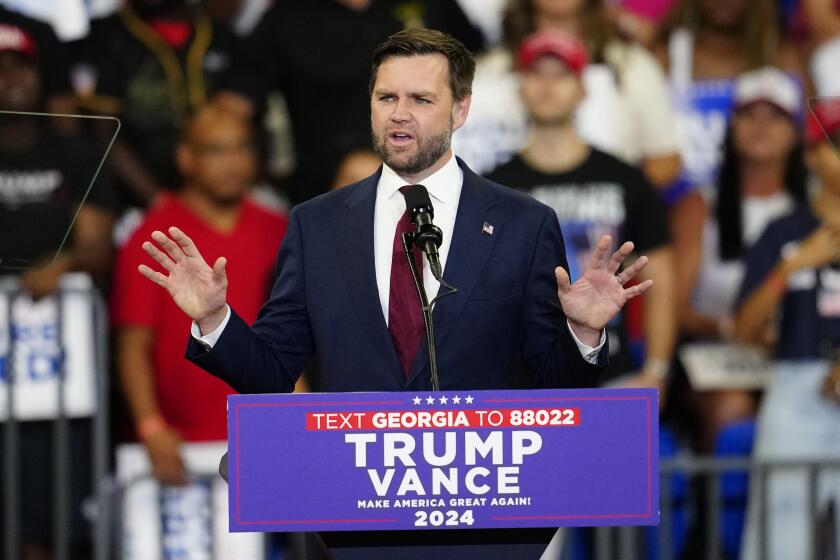A day of heightened tensions and casting blame after white nationalist rally turns deadly in Charlottesville
Charlottesville was on edge Sunday as police and residents tried to piece together how a white nationalist rally turned deadly when a man rammed his car into counter-demonstrators in an act described by a member of the Trump administration as terrorism.
Makeshift memorials dotted downtown streets where bloody brawls took place the day before. And police in riot gear stood at the ready in case of more clashes as anti-racist activists gathered near City Hall, holding signs that said, “No Trump, no KKK, no racist USA.”
Rallies were taking place around the country, from Los Angeles to Miami, in support of the dozens injured in Charlottesville and the three who died, including two state police officers whose helicopter crashed Saturday.
“To the white supremacists and the neo-Nazis who came to our state yesterday, there is no place for you here,” Virginia Gov. Terry McAuliffe said, drawing an implicit contrast with President Trump’s refusal to single out the same groups for blame.
“Shame on you,” said the governor, who spoke at the Mt. Zion First African Baptist Church, blocks from the site of the clashes.
On Sunday afternoon, angry protesters chased down one of the rally’s main organizers as he attempted to address a throng of reporters outside Charlottesville City Hall.
Members of the crowd shouted “murderer” and “shame” at Jason Kessler, a blogger based in Charlottesville, as a police sniper watched from a nearby rooftop. One man spat on Kessler before he darted away with the help of a police escort.
Clashes broke out in the city Saturday between anti-racism activists and far-right protesters, many of whom carried shields, weapons and Nazi and Confederate battle flags. One woman was killed when a driver plowed a sports car into a crowd of counter-demonstrators.
On Sunday, city officials identified the woman as Heather Heyer, 32, of Charlottesville. A memorial vigil for her was planned for Sunday evening before it was postponed because of safety concerns. Flowers, cards and a photo of Heyer were spread on the street where she was struck along with a sign that read, “No place for hate!”
The driver — identified as James Alex Fields Jr., 20, from Ohio — was arrested and charged with second-degree murder, malicious wounding and failure to stop at the scene of an accident that ended in death.
The suspect’s mother, Samantha Bloom, who lives in Toledo, Ohio, said she didn’t know that her son was attending a white supremacist rally.
“I thought it had something to do with Trump,” she told the Toledo Blade, saying she avoided getting “too involved” in her son’s political views.
Derek Weimer, who was Field’s high school history teacher where he grew up in northern Kentucky, told WCPO-TV in Cincinnati that Fields had been “infatuated with Nazis” and had “radical ideas on race.”
Photos circulating on social media appeared to show Fields posing with members of Vanguard America, a white nationalist group, on the day of the rally. Fields held a black-and-white shield with the organization’s insignia. The group said Fields was not a member and that shields were distributed widely.
More details also emerged about the two state troopers killed when a State Police helicopter crashed near the city after monitoring the chaos.
H. Jay Cullen, 48, was a veteran of the force who spent years flying the governor around the state. Berke M.M. Bates, 40 — he would have celebrated his 41st birthday Sunday -- was just beginning a career as a helicopter pilot that he had dreamed about for decades.
Dozens of others were injured Saturday, including 19 people hospitalized after the car attack. Ten of those people were listed in “good condition” Sunday at the University of Virginia Medical Center, and nine had been discharged.
“We have treated additional patients related to Saturday’s events but we do not have an exact number of patients,” the hospital said in a statement.
At the church service Sunday, McAuliffe praised police for preventing more deadly violence the previous day, saying he was told that 80% of the white nationalist protesters were armed.
“What I’m asking you to do today is put aside the anger, as I did when I got up today,” McAuliffe said. “Let us show these people that we are bigger than they are, we are stronger than they are.
“You can’t stop some crazy guy who came here from Ohio and used his car as a weapon. He is a terrorist,” McAuliffe said.
Others, however, were quick to cast blame, including on Trump — who many demonstrators said ran a campaign that emboldened white supremacists — as well as on police.
Michael Signer, the city’s Democratic mayor, accused Trump in television interviews of taking part in “intentional courting” of white supremacists.
In a statement, Kessler, the rally organizer, deflected blame and pinned responsibility on city officials. He said the violence was “primarily the result of the Charlottesville government officials and the law enforcement officers which failed to maintain law and order by protecting the First Amendment rights of the participants of the ‘Unite the Right’ rally.”
Kessler, who organized the demonstration in response to the city’s efforts to take down a statue of Confederate Gen. Robert E. Lee in a park, also accused police of not doing enough to keep the two sides apart.
Anti-racism activists also questioned why Charlottesville police, who had several weeks to prepare for the permitted rally, seemed caught off guard by events. Video clips shared on social media showed police standing by in some cases as brawls broke out in the morning before the rally was officially set to begin.
Police declared the demonstration an unlawful assembly, and by 11 a.m. the governor had declared a state of emergency.
Alex Vitale, a sociology professor at Brooklyn College who studies policing and protests, said the strategies used by law enforcement in Charlottesville played a role in how quickly tensions escalated.
Vitale said it looked as if large numbers of police were assigned to guard fixed barriers in heavy riot gear, which may have prevented them from moving quickly into the street and making arrests.
“They assumed that the crowds would just have their rallies and keep separate,” Vitale said.
That was a “big mistake,” he said. “They knew who was coming, and they knew there was going to be a potential flashpoint between protesters and counterprotesters. But they had the wrong game plan.”
The Charlottesville police chief, Al Thomas, declined to speak to journalists Sunday.
The White House and Trump associates, meanwhile, pushed back after critics, including prominent Republicans, condemned the president for not singling out white supremacists by name when he said that “many sides” were responsible for the violence in Charlottesville.
“The president said very strongly in his statement yesterday that he condemns all forms of violence, bigotry and hatred, and of course that includes white supremacists, KKK, neo-Nazi, and all extremist groups,” the White House said in a statement. “He called for national unity and bringing all Americans together.”
Speaking on NBC News on Sunday, national security advisor H.R. McMaster said that it “ought to be clear to all Americans” that Trump’s comments about the attack were meant as condemnation of white supremacists. On ABC News, McMaster described the car attack on counter-protesters as “terrorism.”
Los Angeles Times staff writers Cloud reported from Charlottesville and Kaleem from Los Angeles. Etehad contributed reporting from Los Angeles.
More to Read
Sign up for Essential California
The most important California stories and recommendations in your inbox every morning.
You may occasionally receive promotional content from the Los Angeles Times.











